Introduction to Guided Meditation for Beginners
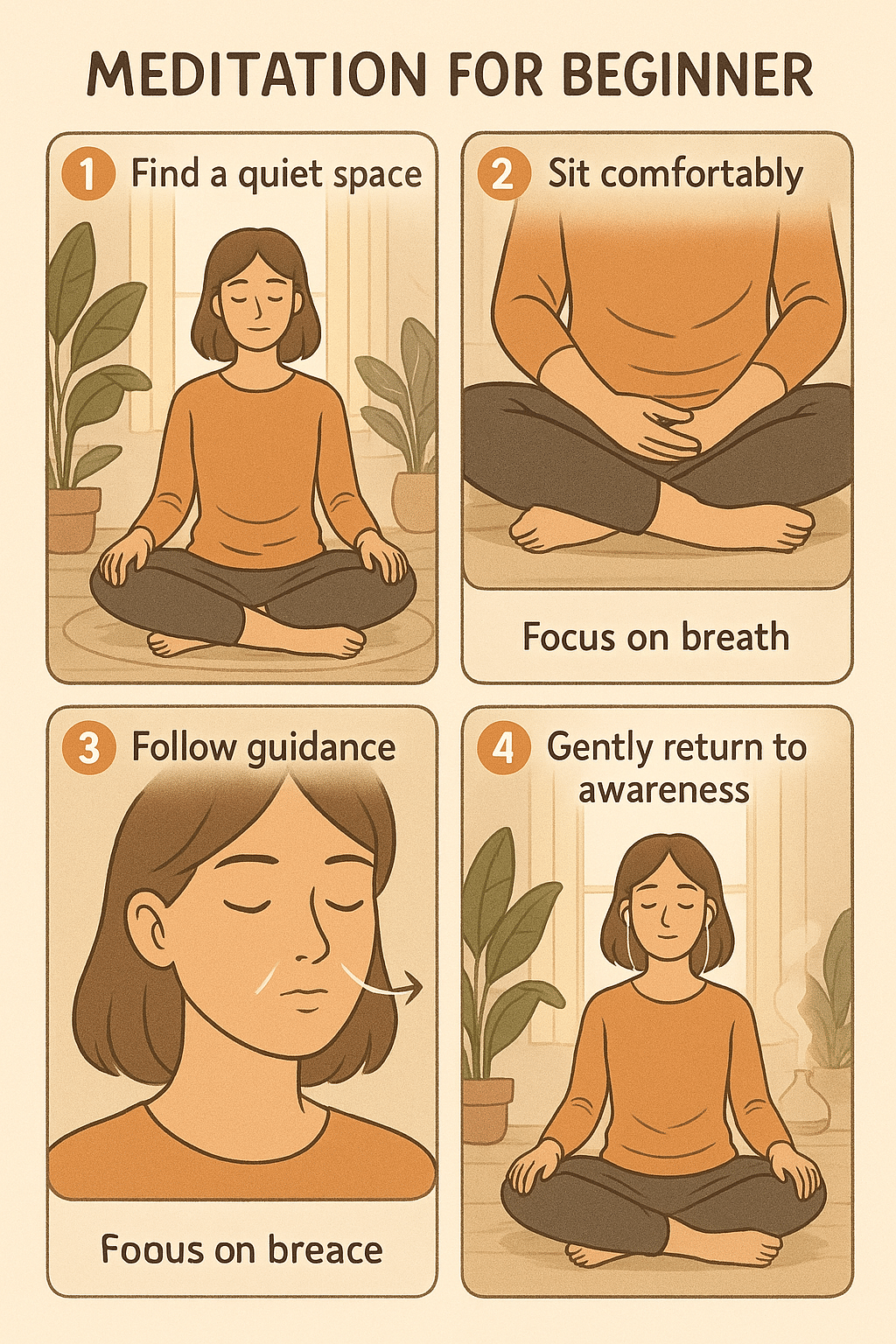
If you’ve been feeling overwhelmed by the daily grind, you’re not alone. Stress and anxiety are common challenges, especially when balancing life’s many demands. That’s where guided meditation for beginners comes into play—a powerful, accessible tool to ease your mind and restore balance. Whether you’re completely new to meditation or looking for a gentle way to build a solid practice, guided meditation offers a structured approach that’s both approachable and effective. In this article, I’ll walk you through everything you need to know about guided meditation for beginners, including its benefits, how to prepare your space, popular techniques, and five powerful guided sessions that can transform your well-being. Let’s dive in and explore how you can unlock calm and clarity through meditation.
Understanding Meditation and Its Benefits
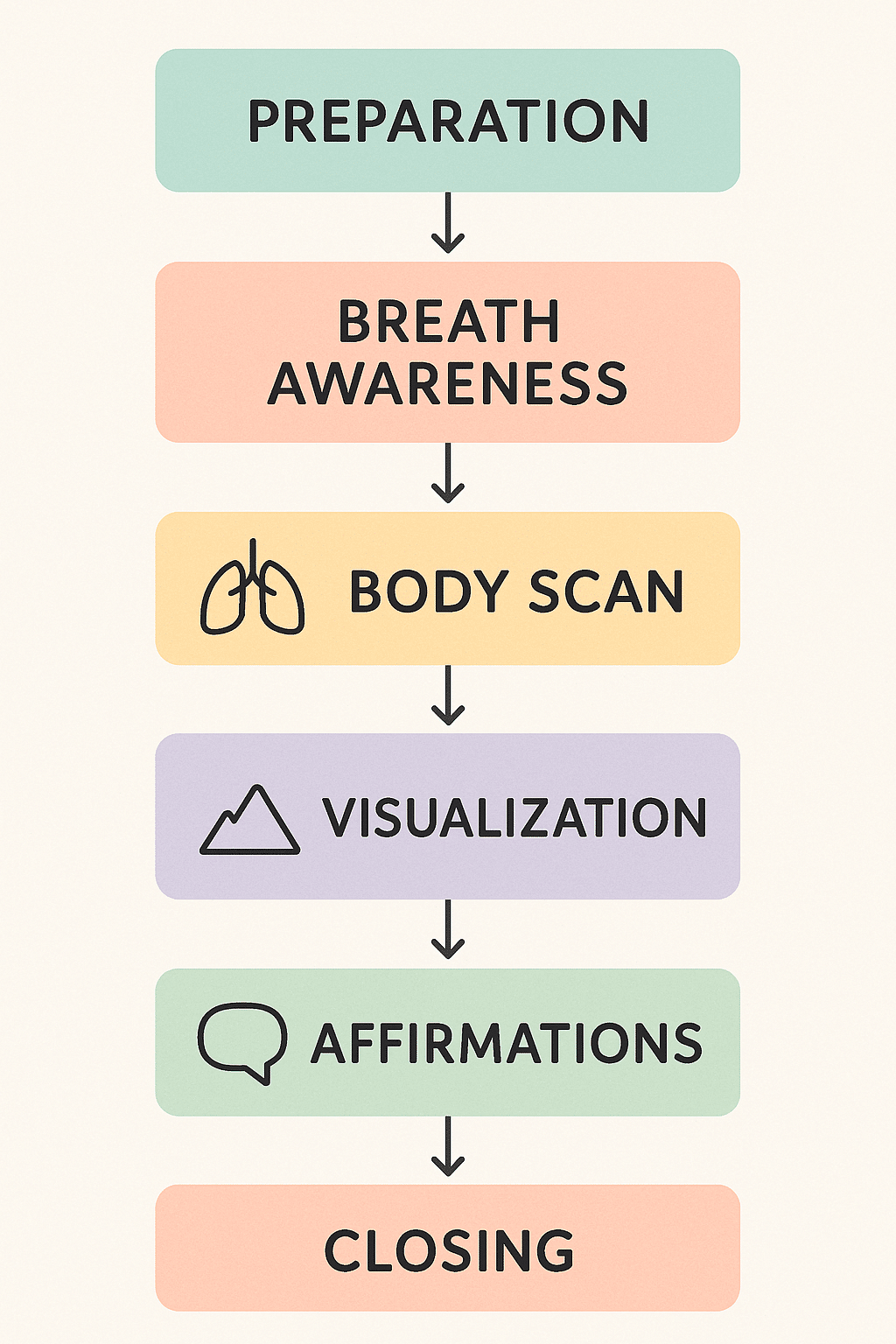
Meditation is a mindful practice that involves focusing your attention and eliminating the stream of jumbled thoughts that often crowd the mind. While meditation comes in many forms, guided meditation for beginners stands out by offering step-by-step instructions through audio or video recordings, which makes it easier to follow without getting lost or frustrated.
The benefits of meditation, extensively supported by scientific studies, include:
- Stress reduction: Meditation lowers cortisol, the stress hormone, bringing a profound relaxation response.
- Improved emotional regulation: Regular practice helps manage anxiety, depression, and mood swings.
- Enhanced focus and mental clarity: Meditation strengthens the brain’s ability to concentrate.
- Better sleep: Mindfulness techniques help soothe racing thoughts before bedtime.
- Physical health: It can reduce blood pressure and improve immune function.
When done consistently, meditation rewires your brain through neuroplasticity—the process where the brain forms new neural connections—helping you respond to stress with calm and balance.
Why Guided Meditation is Ideal for Beginners
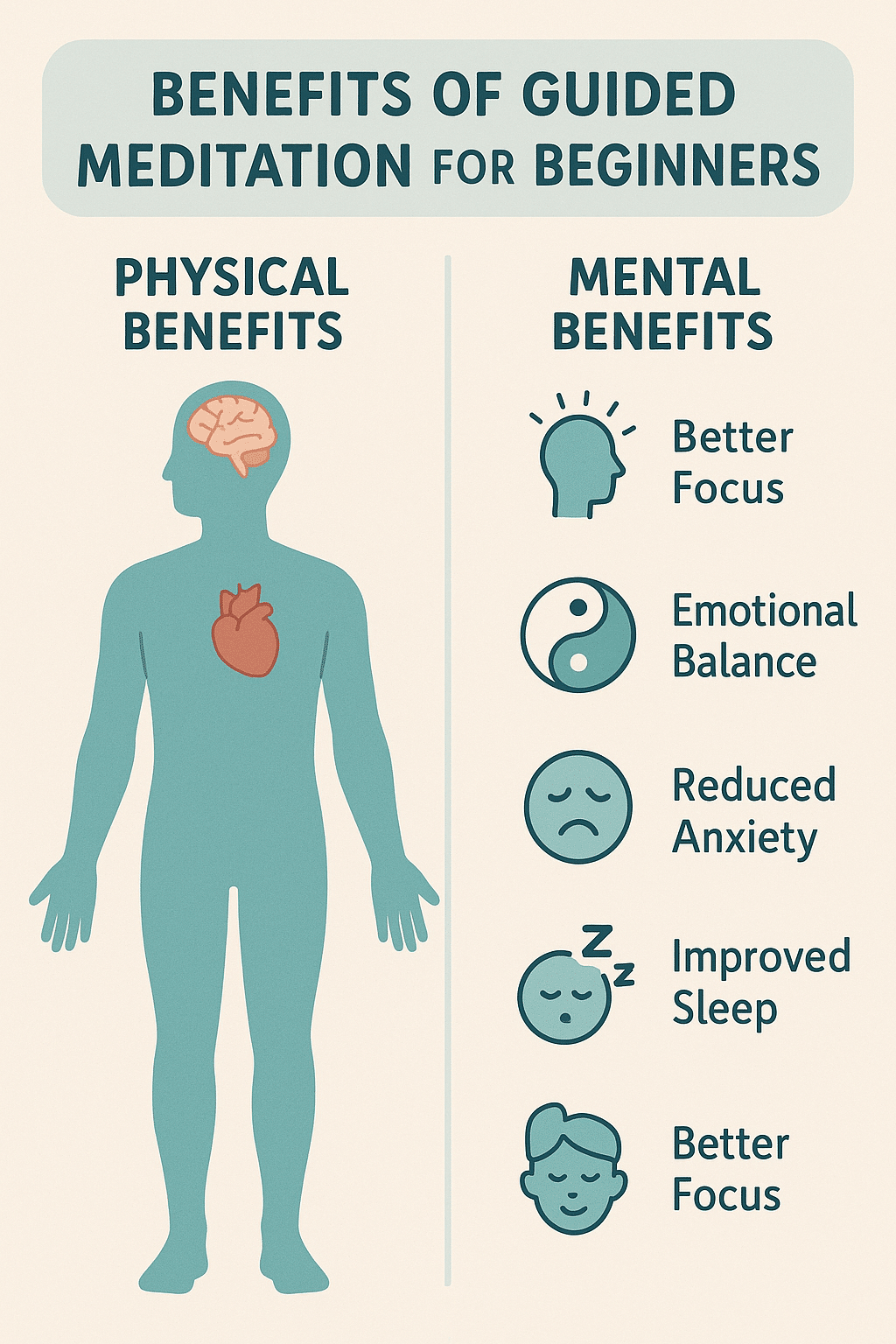
Starting meditation can feel daunting. Sitting alone with your thoughts might seem challenging or intimidating at first. Guided meditation acts like a friendly coach, gently leading you through the process so you don’t feel lost or overwhelmed. Here’s why it’s especially great for beginners:
- Structure and clarity: Guided sessions provide clear instructions, making it easy to focus.
- Motivation and support: Hearing a calm voice can encourage persistence.
- Variety: From breath awareness to visualization, you experience different techniques to find what suits you best.
- Time-efficient: Many guided meditations last 5 to 20 minutes—ideal for busy schedules.
- Accessibility: Available via apps, websites, and video platforms so you can meditate anywhere.
This approach helps build foundational skills with less frustration and keeps you engaged.
The Science Behind Meditation for Stress Relief and Balance
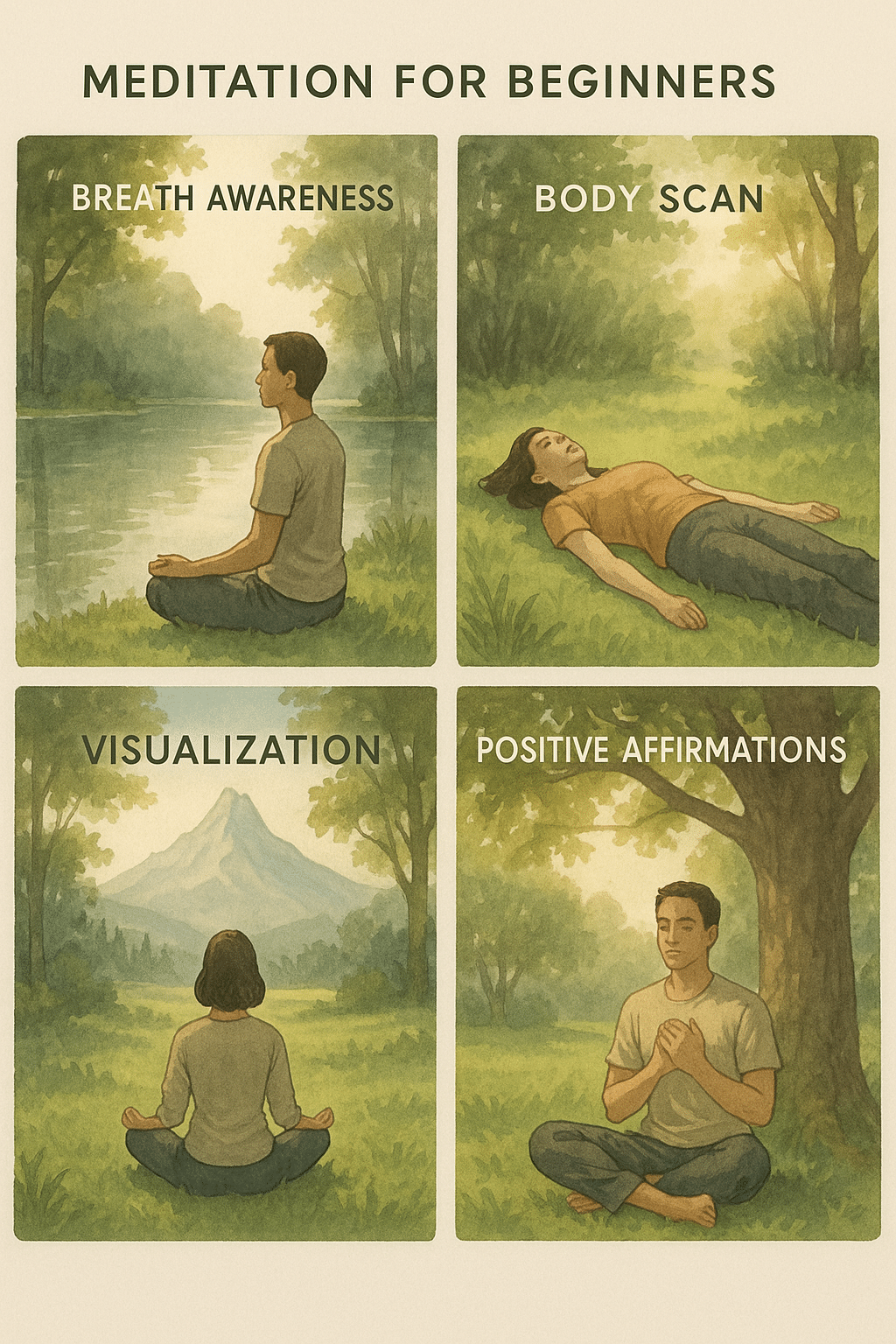
Meditation’s calming effects are backed by neuroscience. Research using MRI scans shows that meditation increases activity in brain areas linked to positive mood and decreases activity in the amygdala—the brain’s fear and stress center. Regular guided meditation can:
- Reduce levels of cortisol, a hormone triggered by chronic stress.
- Increase gray matter density in the hippocampus, aiding learning and memory.
- Boost connectivity in prefrontal cortex regions responsible for decision-making and impulse control.
- Support emotional regulation by enhancing connections between the prefrontal cortex and amygdala.
These changes lead to greater resilience, allowing you to approach life’s challenges with steadiness and improved mental balance.
Preparing for Your Meditation Practice
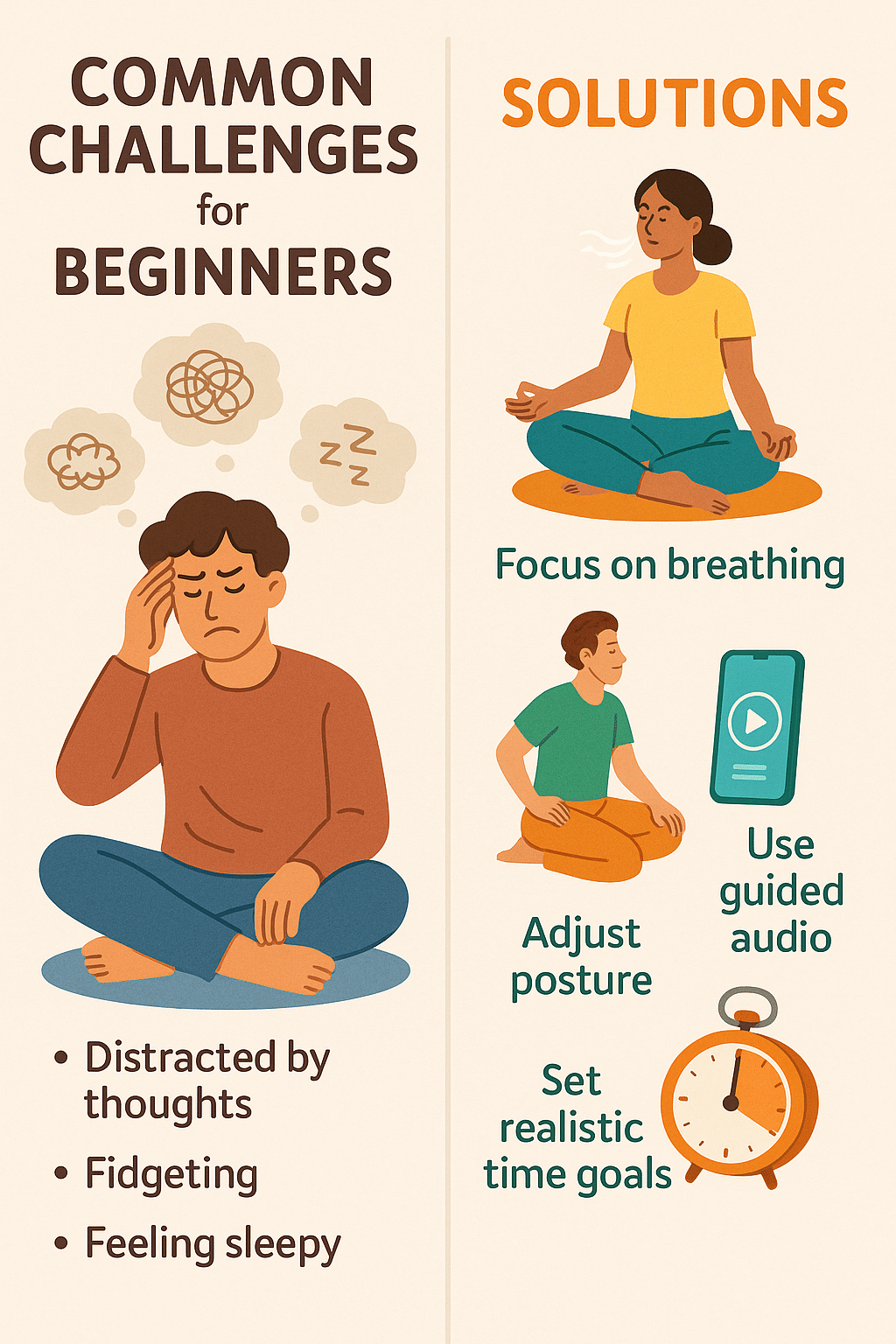
Creating a Comfortable Meditation Space
Your meditation environment plays a key role in fostering relaxation and focus. Here’s how to set up a space that invites peace:
- Quiet and distraction-free: Choose a room or corner where interruptions are rare.
- Comfortable seating: Use cushions or chairs supporting your posture without strain.
- Soft lighting: Natural light or dim lamps reduce sensory overload.
- Pleasant ambiance: Consider gentle scents like lavender or calming sounds such as soft instrumental music.
- Personal touches: Add items like plants, meaningful objects, or meditation beads to enhance your connection.
A dedicated area primes your mind to shift into meditation mode.
Posture and Comfort Tips Inspired by Breathing Room Video Series
Proper posture is foundational. Breathing Room’s Meditation for Beginners video series emphasizes:
- Sitting up straight but relaxed, maintaining a neutral spine.
- Feet flat on the floor or crossed comfortably.
- Hands resting loosely on your lap or knees.
- Relaxed shoulders, neck, and jaw.
- Gentle, natural breathing through the nose.
This posture supports steady, deep breathing essential for breath awareness meditations.
Setting Realistic Expectations and Goals for Beginners
Meditation is a skill developed over time, so don’t expect instant mastery or immediate stress relief. Start with:
- Small, manageable sessions (5–10 minutes).
- Non-judgmental attitude—some days will be easier than others.
- Focusing on consistency rather than length.
Set goals like meditating daily or integrating sessions during stressful moments, which fosters progress and motivation.
Selecting the Best Time and Duration for Daily Practice
Choosing when to meditate can impact your success:
- Morning: Meditating after waking helps cultivate calm before the day’s stress.
- Midday: Breaks during work can reset focus and reduce anxiety.
- Evening: Meditation before sleep can support relaxation and improved rest.
Consistency is more important than duration. Begin with 5–10 minutes daily, gradually increasing to 20 or more if it fits your schedule.
Overview of Popular Guided Meditation Techniques for Beginners
Breath Awareness and Guided Breathing Meditations
Focusing on the breath is the simplest and most effective meditation technique. Guided breathing sessions direct your attention to inhalation and exhalation, helping to anchor the mind and reduce racing thoughts.
Using Flaxseeds and Fairytales’ 10-Minute Guided Breathing Meditation
Flaxseeds and Fairytales offers a free 10-minute guided breathing meditation designed specifically for relaxation and anxiety relief. This session gently guides you to:
- Notice the rhythm of your breath.
- Feel the sensations of air entering and leaving your nostrils.
- Release tension with each exhale.
It’s accessible online (flaxseedsandfairytales.com) and ideal for anyone seeking quick stress relief with simple, clear guidance.
Mindfulness and Body Scan Techniques
Mindfulness meditation involves focusing fully on the present moment, often by observing sensations in the body without judgment. Body scans direct attention slowly through different body parts, helping to identify areas of tension or relaxation.
Insights from The Joy Within Mindfulness Meditation Script
The Joy Within provides mindfulness scripts that guide you gently through your body to cultivate awareness and presence. This technique cultivates deep relaxation by:
- Observing physical sensations sequentially.
- Accepting feelings without resistance.
- Encouraging a connection between mind and body.
Regular practice enhances emotional regulation and stress resilience.
Loving-kindness and Visualization Meditations
These meditations focus on cultivating positive emotions:
- Loving-kindness (Metta) meditation involves sending warm wishes to yourself and others, promoting empathy and emotional healing.
- Visualization meditations use mental imagery, such as imagining peaceful places or light filling the body, to induce relaxation.
Both types support emotional balance and reduce feelings of isolation.
Progressive Muscle Relaxation and Relaxation Techniques
Progressive muscle relaxation systematically tenses and releases muscle groups to alleviate physical stress. Integrated into guided meditation, it heightens bodily awareness and promotes deep relaxation.
5 Powerful Guided Meditation Sessions for Beginners
1. Breathing Room Meditation for Beginners Video Series: Foundation and Presence
Breathing Room’s series offers five comprehensive meditations covering:
- Proper sitting posture.
- Foundational breathing exercises.
- Progressive relaxation techniques.
Designed for newcomers, it nurtures presence and joy in daily life. The media is accessible through subscription or individual video purchase (breathingroom.com) and includes a free 7-day trial.
2. Guided Meditation Framework® Starter Series: Structured Stress Relief and Focus
This professionally curated program provides a step-by-step meditation framework tailored for beginners. It offers:
- Audio meditations focused on reducing stress and enhancing concentration.
- Instructional material that explains technique and theory.
- Practical exercises to deepen your practice.
It’s ideal if you want a clear structure and expert guidance, available at (guidedmeditationframework.com).
3. Flaxseeds and Fairytales 10-Minute Meditation for Relaxation and Anxiety Relief
Perfect for busy individuals, this free session is a quick, effective introduction to breath-focused mindfulness. Its calming narrative paired with soothing music makes it easy to relax anytime, accessible via their website.
For a deeper experience, their 7-day meditation challenge offers a series of short videos delivered by email. Sign up here: (flaxseedsandfairytales.com).
4. Calm App’s “7 Days of Calm” Series: Building Consistency and Mindfulness
Calm’s introductory series guides beginners through a week of daily meditations emphasizing foundational techniques. Features include:
- Convenient app access for iOS and Android.
- Sessions ranging from 5 to 10 minutes.
- Gradual skill building in mindfulness and relaxation.
The app offers a free trial and some free content with subscription purchases needed for full access (support.calm.com).
5. Headspace App Basic Course: Fundamentals of Meditation and Mindfulness
Headspace’s Basics course is well-known for its friendly, accessible teaching style. You’ll learn:
- Breathing exercises.
- Body awareness.
- Mindfulness techniques in short, engaging sessions.
Available on multiple platforms with a free trial, the paid subscription unlocks hundreds of guided meditations (headspace.com). The Netflix animated series “Headspace Guide to Meditation” also complements learning.
How to Integrate Guided Meditation into Your Daily Routine
Developing a Sustainable Daily Guided Meditation Routine
To make meditation a natural part of your day:
- Choose a consistent time (morning or evening).
- Keep the sessions short but regular.
- Prepare your meditation space beforehand.
- Use guided meditations that inspire you.
- Track your progress in a journal or app.
Consistency beats duration when building habits. Even 5 minutes daily over time creates meaningful change.
Tips for Staying Motivated and Encouraged
- Join meditation groups or challenges to connect with others.
- Vary the guided meditation styles to keep engagement high.
- Celebrate small wins (every completed session!).
- Use apps that send reminders and motivational messages.
Exploring Meditation Challenges and Programs, e.g., 7-Day Challenge from Flaxseeds and Fairytales
Challenges like Flaxseeds and Fairytales’ 7-day program offer:
- Guided videos sent daily.
- Gradual progression from basics to deeper practice.
- Supportive emails with tips and encouragement.
These structured programs help overcome inertia and deepen commitment.
Choosing the Right Guided Meditation Tools and Apps for You
App Comparisons: Features, Accessibility, and User Experience
- Calm: Best for beginners wanting variety, includes sleep stories and music. Free trial available.
- Headspace: User-friendly, excellent for building foundations. Subscription model with extensive content.
- Guided Meditation Framework®: Focuses on structured learning with expert coaching.
- Flaxseeds and Fairytales: Free, easy-access meditations with a nurturing tone.
Free vs. Subscription-Based Guided Meditation Resources
Free resources often cover basics well and are great to try first. Subscription apps provide:
- Extensive libraries.
- In-depth courses.
- Personalized progress tracking.
- Support communities.
Assess your budget and goals to decide the best fit.
How to Personalize Your Meditation Practice Using Apps and Online Resources
Try different styles—breath awareness, loving-kindness, visualization—and note what feels best. Use app features that tailor sessions to your mood, time, or goals. Over time, customize playlists or bookmarks to build your ideal meditation mix.
Overcoming Common Beginner Challenges in Guided Meditation
Managing Distractions and Restlessness
It’s normal to have a wandering mind! Gently guide your focus back to the instructions without frustration. Try grounding techniques like feeling your feet on the floor or counting breaths.
Dealing with Physical Discomfort During Meditation
Adjust seating support, use cushions, or meditate lying down if needed. Light stretching before sessions can ease tension. If sitting crosses your legs, try chairs with back support.
Cultivating Patience and Compassion for Your Practice
Meditation is gradual. Celebrate progress, not perfection. Be kind to yourself on difficult days, remembering that even brief meditation is beneficial.
The Unique Role of Guided Meditation in Enhancing Emotional Regulation and Neuroplasticity
Meditation’s Impact on Brain Structure and Function
Guided meditation helps rewire neural pathways associated with emotional control and stress response. Consistent practice thickens regions of the brain involved in attention and emotional resilience, promoting lasting mental health improvements.
Using Guided Meditation to Support Mental Clarity, Focus, and Emotional Balance
Regular sessions improve:
- Ability to concentrate in work and personal life.
- Awareness of emotional triggers.
- Ability to respond to stress calmly rather than reactively.
These benefits help you navigate daily challenges with a clearer mind and calmer heart.
Conclusion: Embarking on a Lasting Journey Toward Stress Relief and Wellness
Guided meditation for beginners opens the door to profound stress relief and emotional balance. By approaching meditation with the right tools, realistic expectations, and supportive resources like Breathing Room’s video series or apps like Calm and Headspace, you’re setting yourself up for success. Remember, it’s not about mastering meditation overnight but gently nurturing your mind-body connection each day. I encourage you to explore the five powerful guided meditation sessions outlined here, experiment with different techniques, and build a routine that fits your life and goals. Your well-being journey starts with a single breath—why not take it now?
FAQs About Guided Meditation for Beginners
Q1: How long should a beginner meditate each day?
A beginner should start with 5 to 10 minutes daily. Even brief sessions practiced consistently offer significant stress relief and improved focus.
Q2: Can guided meditation help with anxiety and stress?
Absolutely. Guided meditation trains your brain to reduce cortisol levels while enhancing emotional regulation, which helps relieve anxiety and manage stress effectively.
Q3: Are there free guided meditation resources for beginners?
Yes, Flaxseeds and Fairytales offers free 10-minute guided breathing meditations and a free 7-day meditation challenge. Apps like Calm and Headspace also provide some free content.
Q4: What is the best time to meditate daily?
Choose a time that suits your routine, such as morning to set a calm tone for the day or evening to unwind. Consistency is key, so pick a time you can stick to.
Q5: How do I handle distractions during meditation?
Recognize distractions without judgment and gently guide your focus back to the meditation instructions or breath. Regular practice builds stronger concentration over time.
Quick Takeaways/Key Points
- Guided meditation provides structured, accessible support ideal for beginners.
- Meditation reduces stress hormones and enhances brain function for emotional balance.
- Creating a comfortable space and setting realistic goals helps sustain your practice.
- Popular beginner techniques include breath awareness, mindfulness, loving-kindness, and progressive relaxation.
- Resources like Breathing Room, Flaxseeds and Fairytales, Calm, Headspace, and Guided Meditation Framework® offer powerful guided sessions.
- Consistent short sessions beat long sporadic ones; aim for daily practice.
- Overcoming hurdles like distractions and discomfort requires patience and self-compassion.
Ready to find your calm? Explore these guided meditation tools and techniques, make space for your mind, and begin your journey toward stress relief and inner balance today!

